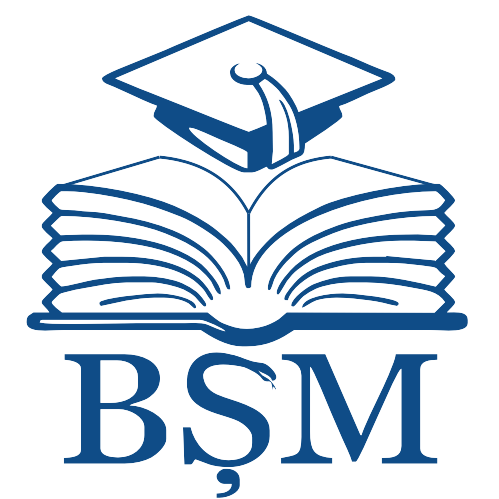| DC Field | Value | Language |
|---|
| dc.contributor.author | Zelenschi, Valentin | |
| dc.contributor.author | Ursu, Sergiu | |
| dc.date.accessioned | 2025-05-12T07:55:41Z | |
| dc.date.available | 2025-05-12T07:55:41Z | |
| dc.date.issued | 2025 | |
| dc.identifier.citation | ZELENSCHI, Valentin and Sergiu URSU. Treatment of trigger finger: a literature review. In: Cells and tissues transplantation. Actualities and perspectives. The 3rd edition : The Materials of the National Scientific Conference with international participation dedicated to the 80th anniversary of the founding of Nicolae Testemitanu State University of Medicine and Pharmacy. Chisinau, March 21-22, 2025: [abstracts]. Chişinău: CEP Medicina, 2025, p. In: Cells and tissues transplantation. Actualities and perspectives. The 3rd edition : The Materials of the National Scientific Conference with international participation dedicated to the 80th anniversary of the founding of Nicolae Testemitanu State University of Medicine and Pharmacy. Chisinau, March 21-22, 2025: [abstracts]. Chişinău: CEP Medicina, 2025, p. 103. ISBN 978-9975-82-413-2. | en_US |
| dc.identifier.isbn | 978-9975-82-413-2 | |
| dc.identifier.uri | https://repository.usmf.md/handle/20.500.12710/30513 | |
| dc.description.abstract | Introduction. A special section in hand surgery is dedicated to "trigger finger" disease, a common
disabling disorder of the upper limb. trigger finger disease can occur at different ages, from children
to geriatric patients. The lifetime risk of occurrence is between 2 and 3%. Incidence is 6 times higher
in the female population. It may occur in one or more fingers on each hand and may be bilateral. The
main cause of trigger finger results from a mismatch between the dimensions of the flexor tendon and
its tendon sheath, leading to faulty gliding of the tendon, resulting in pain, clicking and functional
difficulties. Patients present with structural changes in the pulley system of the fingers and tendon
sheaths
Aim of the work. The aim of our study is to investigate the concept, clinic, methods of diagnosis and
treatment of trigger finger and to identify the particularities of the incidence of this disease according
to sex, age, professional occupation, affected fingers, degree of severity according to Quinnell, the
evolution of the disease over time, until and after surgical treatment.
Material and methods. More than 60 scientific articles, selected from PubMed, Research Gate,
Google Scholar and Elsevier databases, mostly published in the last ten years, were included in the
study. The inclusion criteria were as follows: full-text, open access article addressing the problem
under investigation. The data obtained were subsequently systematized and analysed.
Results. In the medical literature there is a lack of a standardized protocol considered to be "best
practice" for this condition. Researchers believe that a multidisciplinary consensus would be desirable
to standardize and optimize the treatment of trigger finger. Therapeutic approaches can be divided into
two main categories: conservative treatment and surgical treatment. Depending on the severity of the
symptoms and the speed of progression of the pathological process, the methods of treatment of the
trigger finger include: immobilization with orthosis, drug treatment, physiotherapeutic treatment and
surgical treatment, which in turn consists of open surgery and percutaneous surgery. Conservative
treatment with orthotics, medication and physiotherapy is most effective in the early and moderate
stages of the disease. In severe cases the trigger finger is treated surgically. As for the technique of
surgical treatment, too, there is no single opinion. There is discussion about the priority of open or
closed ligamentotomy, choice of surgical approach, total or partial ligamentotomy of the annular
ligament, resection of the degeneratively changed portion of the annular ligament or without it. No
consensus was reached whether partial tenotomy or total removal of the thickened portion of the tendon
or without this surgical maneuver is more effective. With early function after surgery or immobilization
of the operated segment.
Conclusions. From the analysis of the literature sources studied we conclude that there is no consensus
among scientific researchers on the optimal therapeutic approach to the trigger finger. Further largescale studies are needed to develop a treatment algorithm in the two age groups of adults and children.
The treatment of trigger finger includes conservative and surgical methods, applied depending on the
severity of the disease manifestations. Conservative treatment consists of immobilization with
orthoses, drug treatment with NSAIDs and corticosteroids and physiotherapy Basic treatment is
surgical, which involves open or percutaneous surgery to release the affected pulley. | en_US |
| dc.language.iso | en | en_US |
| dc.publisher | CEP Medicina | en_US |
| dc.relation.ispartof | Cells and tissues transplantation. Actualities and perspectives. The 3-rd edition. Chisinau, March 21-22, 2025 | en_US |
| dc.subject | trigger finger | en_US |
| dc.subject | hand surgery | en_US |
| dc.subject | ligamentotomy | en_US |
| dc.subject | orthotics | en_US |
| dc.subject | physiotherapy | en_US |
| dc.title | Treatment of trigger finger: a literature review | en_US |
| dc.type | Other | en_US |
| Appears in Collections: | The Materials of the National Scientific Conference with International Participation „Cells and tissues transplantation. Actualities and perspectives. The 3rd edition” dedicated to the 80th anniversary of the founding of Nicolae Testemitanu State University of Medicine and Pharmacy. Chisinau, March 21-22, 2025: [Abstracts]
|


